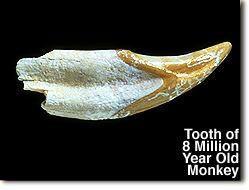UAE's Miocene rocks and their fossil record
 The Miocene rocks have been divided into two formations - the Baynunah and the Shuwaihat Formations named after the places where they are best exposed. The Shuwaihat Formation outcrops at sea level in some of the coastal exposures and mainly consists of fossilised aeolian sands. These rocks seem to lack any fossils that can be used for dating purposes, but by careful stratigraphic work it is believed that rocks of the Shuwaihat Formation might be of the same age as similar rocks found in Saudi Arabia. Thus, their age might be about 14 million years old. Confirming evidence for this date, plus or minus a few million years, comes from detailed analysis of the imprint of the earth's magnetic field on the iron minerals in the sandstone: magnetochronology. The Miocene rocks have been divided into two formations - the Baynunah and the Shuwaihat Formations named after the places where they are best exposed. The Shuwaihat Formation outcrops at sea level in some of the coastal exposures and mainly consists of fossilised aeolian sands. These rocks seem to lack any fossils that can be used for dating purposes, but by careful stratigraphic work it is believed that rocks of the Shuwaihat Formation might be of the same age as similar rocks found in Saudi Arabia. Thus, their age might be about 14 million years old. Confirming evidence for this date, plus or minus a few million years, comes from detailed analysis of the imprint of the earth's magnetic field on the iron minerals in the sandstone: magnetochronology.
After the aeolian sands of the Shuwaihat Formation had become rock, a regional river system evolved. The sands, gravels and clays deposited by this river form the Baynunah Formation that overlies the Shuwaihat Formation in the Western Region. The Baynunah Formation contains fossils and, so far, four species of invertebrates; two species of plants; three species of fish; eight species of reptiles; two species of birds and 31 species of mammals have been identified. Of these one species of fish and two mammal species are new to science. It is likely that the fossils from Abu Dhabi represent animals that lived during a time period of between 6 and 8 million years ago.
|